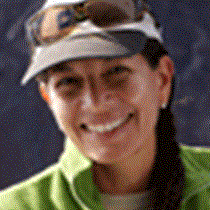Floreana Island
Floreana, also known as Charles, after Charles II of England, or Santa Maria, after one of the caravels of Christopher Columbus, is a peaceful island with a fascinating volcanic landscape and a colorful human history that goes back almost two centuries: from marooned whalers to prisoners and colonists, and from a toothless dentist to a self-proclaimed empress.
Our early morning started with a walk at a site named Punta Cormorant. We disembarked on a beach of olivine sand, greeted by some young sea lions and immediately skirted along a large salt pond where we observed some shorebirds as well as endemic and native vegetation. Then the walk took us to a second beautiful beach, this one of incredibly fine, white, coralline sand, where we had the chance to see a couple of turtles mating and then the female coming out of the water for a brief but special moment.
Back aboard for breakfast, the ship repositioned to a small offshore volcanic cone named Champion Islet. The islet’s rocky shores are home to colonies of Galápagos sea lions, and the underwater cliffs are swarming with colorful fish species, but this is also home to a very small population of the endemic Floreana mockingbird, which was driven to near extinction by cats, rats and other introduced predators on the main island.
With our Zodiacs we circumnavigated the islet in the search of this elusive but unique bird; we not only we saw few of them but were also lucky to spot the beautiful red-billed tropicbirds nesting on the cliffs of Champion, while swallow-tailed gulls, brown noddy terns, Galápagos shearwaters, blue-footed boobies and frigatebirds were constantly flying above us.
The rest of the morning we devoted to deep-water snorkeling, where hundreds of fish were waiting for us. There was “drift snorkeling” for the more experienced but those with less experience were able to see the underwater wildlife either snorkeling on the calm side of the bay or through our glass-bottom boat for a much drier option.
Following lunch, we spent the afternoon visiting the famous Post Office Bay where a barrel (probably set by British Captain James Colnett in 1793) is still used for an old mail swap tradition going back to whaling days. Hundreds of postcards and letters were found in the barrel and to keep the tradition alive, some of our guests collected and left mail with the hope that someday someone will hand-deliver it.
To end this wonderful outing we explored the bay and neighbouring sea lion colony with our Zodiacs and kayaks, and had the great chance to see not only many sea lions but also spotted eagle rays and the famous Galápagos penguins!
After 176 years, we followed the very same steps of Charles Darwin’s during his five-week visit to the Galápagos in September 1835, as Floreana was the second of four islands he visited… How lucky we were to be able to witness what he saw…




